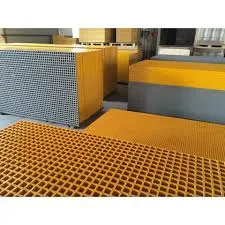Exploring the Benefits and Applications of FRP Scrubber Technologies for Air Pollution Control
Understanding FRP Scrubbers An Efficient Solution for Air Pollution Control
In today's rapidly industrializing world, the need for effective air pollution control systems has become paramount. One such solution that has gained significant attention is the Fiber Reinforced Plastic (FRP) scrubber. These innovative devices are designed to remove pollutants from gases before they are released into the atmosphere, thereby playing a crucial role in maintaining air quality and environmental protection.
Understanding FRP Scrubbers An Efficient Solution for Air Pollution Control
The primary function of an FRP scrubber is to cleanse harmful gases by utilizing a scrubbing liquid to absorb or neutralize the pollutants. The process typically involves the following steps the contaminated gas is drawn into the scrubber, where it meets the scrubbing liquid, which may be water or a chemical solution tailored to specific pollutants. The interaction between the gas and the liquid facilitates the transfer of pollutants from the gas phase to the liquid phase, effectively removing them from the air stream.
frp scrubber

One of the key advantages of FRP scrubbers is their adaptability to various pollutants. They can efficiently treat a wide range of contaminants, including volatile organic compounds (VOCs), sulfur dioxide (SO2), ammonia (NH3), and particulates. This versatility allows industries to choose an optimal scrubbing process based on the specific pollutants they are dealing with, ensuring maximum efficiency and compliance with environmental regulations.
Moreover, FRP scrubbers are known for their low maintenance requirements and operational costs. Compared to traditional metal scrubbers, which may corrode over time, FRP systems offer a longer operational lifespan with minimal wear and tear. This durability not only reduces maintenance expenses but also ensures consistent performance, making them a cost-effective choice for businesses looking to invest in air pollution control technology.
The implementation of FRP scrubbers can also lead to significant environmental benefits. By effectively removing harmful pollutants, these systems help industries reduce their carbon footprint and comply with stringent air quality standards. This proactive approach to air pollution management not only helps protect public health but also enhances the company's reputation as a responsible and environmentally conscious entity.
In conclusion, FRP scrubbers represent a significant advancement in the field of air pollution control. Their unique properties, combined with their efficiency and cost-effectiveness, make them an ideal choice for various industries facing strict environmental regulations. As the urgency to combat air pollution continues to grow, the adoption of FRP scrubbers will undoubtedly play a pivotal role in promoting cleaner air and a healthier environment for future generations.
Latest news
-
Oblate Tanks: Space-Saving, Durable Liquid Storage SolutionsNewsAug.27,2025
-
High-Performance Piping System Solutions for Industry & Commercial UseNewsAug.26,2025
-
Precision Fittings: Durable & Reliable Industrial & Plumbing SolutionsNewsAug.25,2025
-
Practical Steps: Unlock Success with Our Proven GuidesNewsAug.24,2025
-
Transport Tanks: Safe, Durable & Efficient Liquid HaulingNewsAug.23,2025
-
High-Quality Piping Systems for Efficient Flow & DurabilityNewsAug.22,2025











